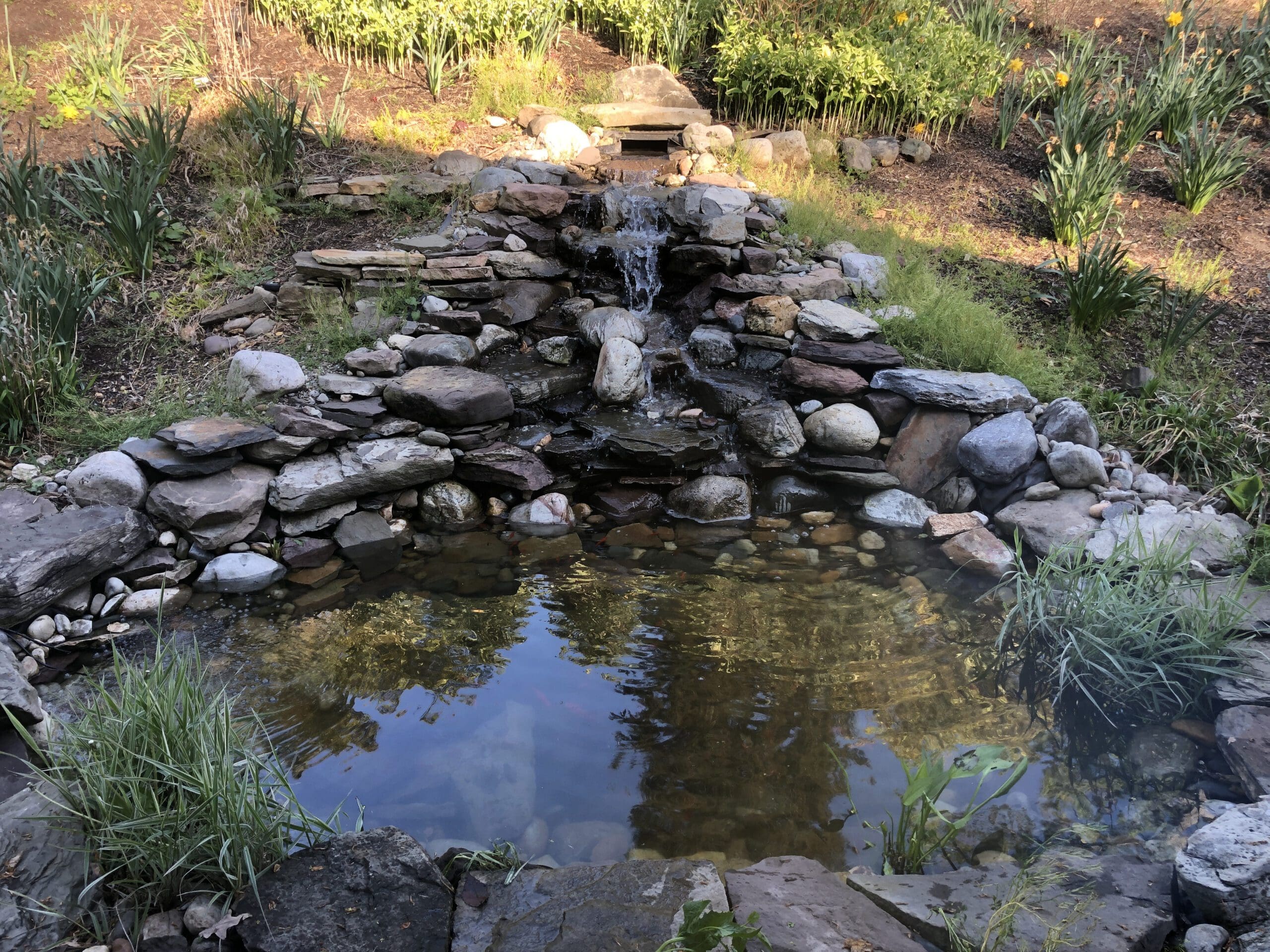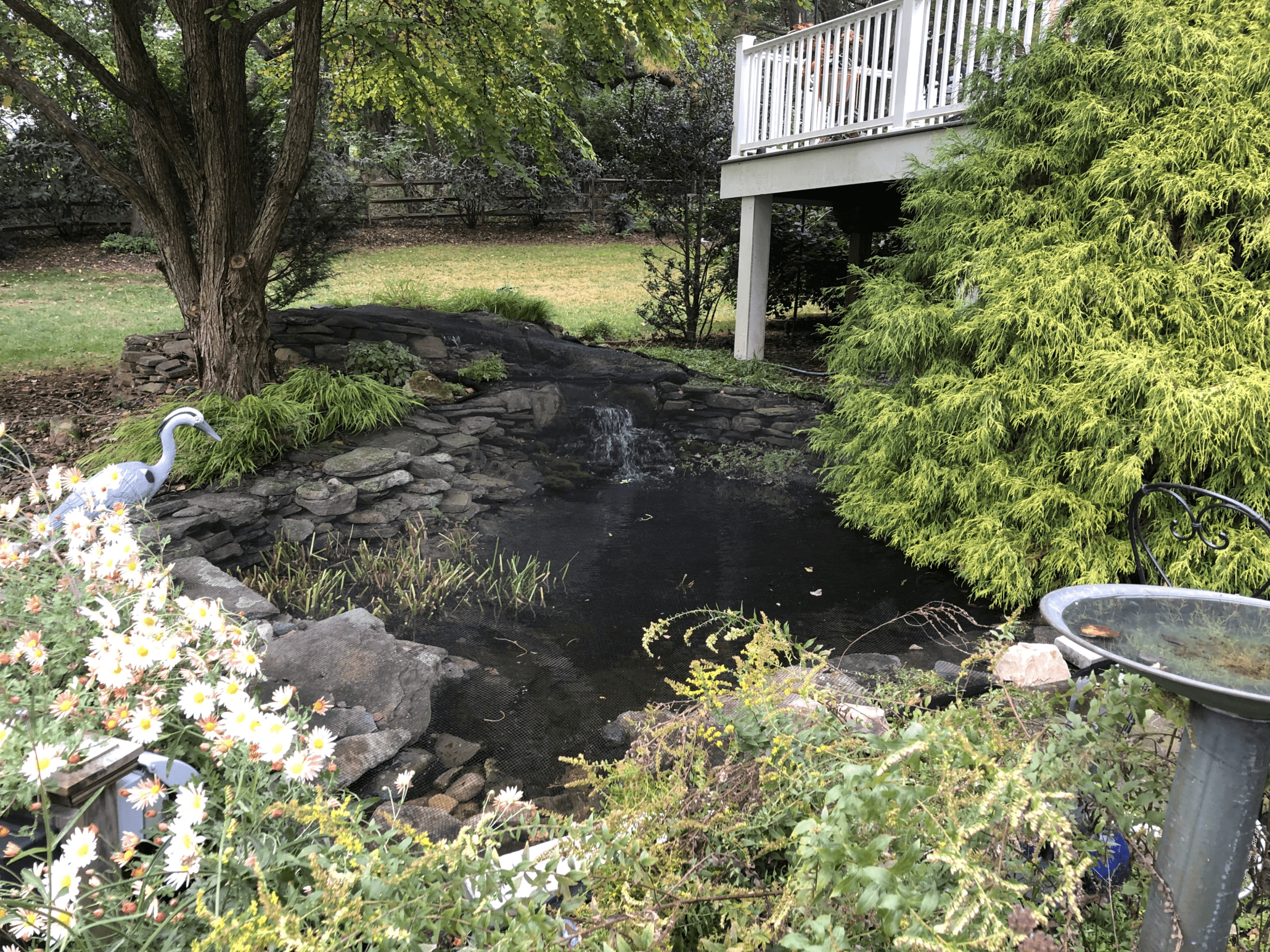Finding a Leak in Your Pond Liner
While some water loss in a water garden is normal due to evaporation and sometimes splash out, significant loss can be a problem and is often due to a Philadelphia Pond Leak. The first, and usually most difficult, step in fixing a leak in a pond is to actually find the leak. Follow these steps to make the job of finding a pond leak little more efficient.
Step 1: Turn off the pond pump.
If the water level continues to drop skip to Step C to continue the search for your pond leak. If the water level stays the same see Step B.
Step 2: Narrow the Leaking Suspects
You have now determined that the leak is not in the main basin pond. Now you need to narrow it down a bit further. The pond leak is either in the plumbing or in the waterfall / stream. Closely inspect your plumbing, particularly at any joints, make sure there is no leakage here. Next, inspect your waterfall and stream for leaks.
Most of the time, the problem is caused by plant matter or other obstructions raising the water level behind the weir and causing an overflow over the liner. Perhaps a stone has settled, or your pond liner has slipped below water level in an area. If it hasn’t rained in a few days, check around the perimeter for a wet spot. If you find one, you have a good idea of where to look closer for the source of the leak. If you still have not found the problem, use the ideas in Step C in the stream bed.
Step 3: Inspecting the Pond Liner
At this point, you have determined that the leak is in the pond itself. Leave the pump off and allow the pond to continue to leak until it stops. If it does not stop before reaching a level dangerous to fish and plants, you will need to temporarily remove them from the pond. While the water level is dropping check around the edges to make sure that the pond liner has not sunken down or rocks have not been displaced.
When the water reaches the point where it is no longer dropping it will be necessary to closely inspect the liner all along this water level to find the source of your pond’s leak. You should be looking for any irregularity in the pond liner from a large gash or a tiny pinprick. For fast leaks you can try putting some milk in a squirt bottle and spraying into the water at the edges of the pond. The milk will cloud the water where there is no hole. It will flow toward the hole, if there is one. This method will not work for slow leaks.
Once you have found the source of your pond leak it is time to make repairs to your pond. If it was just a displaced liner, move everything back into place. If a hole was found in the pond liner, you can try to patch it yourself or reach out to AquaReale to get a new liner put in. We often find when there is one liner hole, there are many more.






